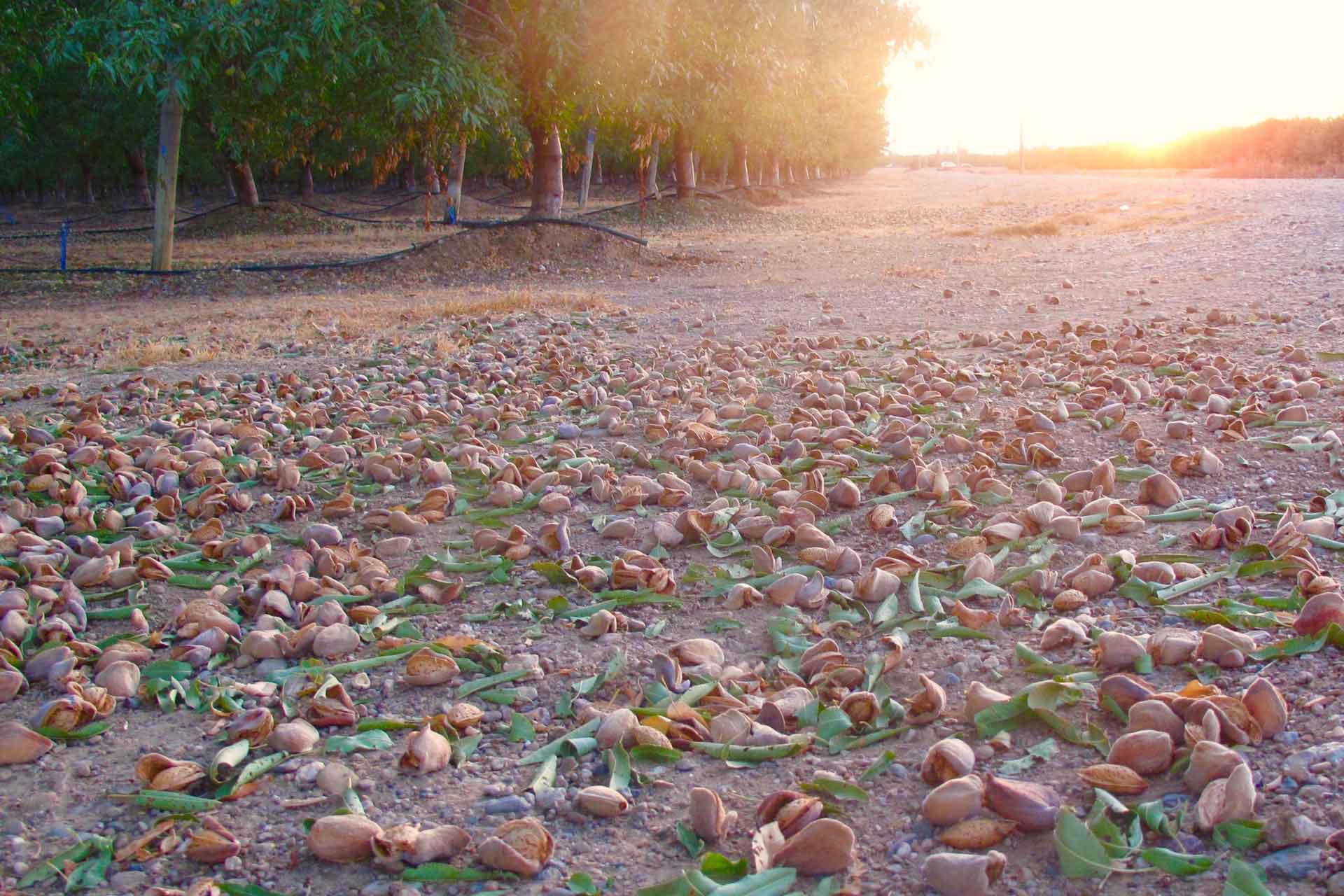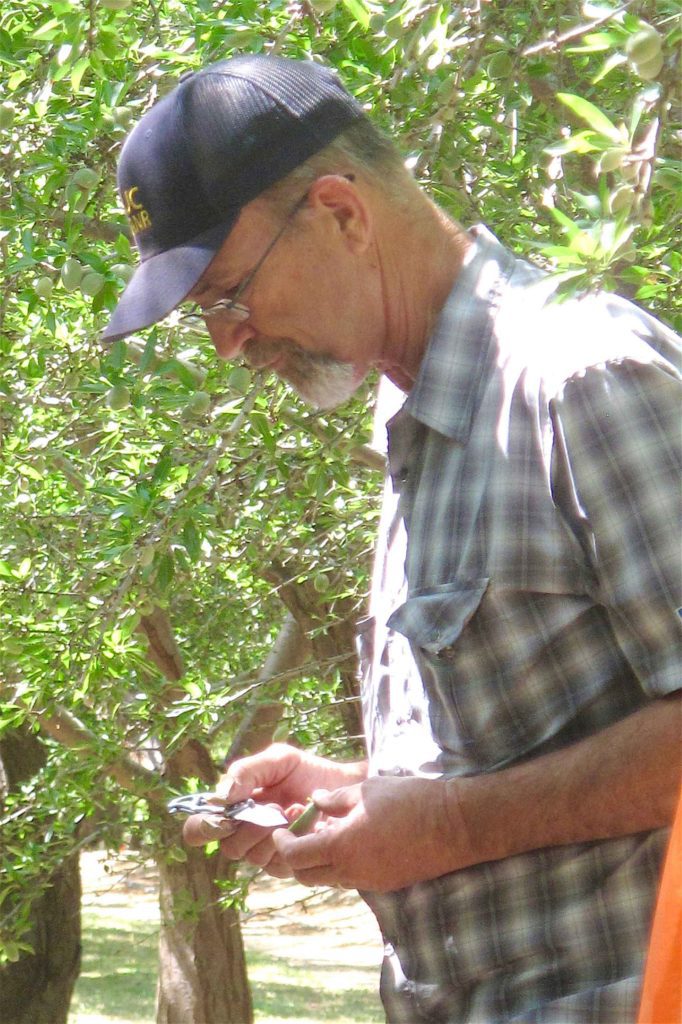
Is there a need for postharvest nitrogen application in almonds? This question has been has examined through research at the Nickels Soil Lab in Colusa County.
Information garnered through studies by Franz Niederholzer, UCCE farm advisor Colusa and Sutter/Yuba counties and research coordinator at the Nickels Soil Lab, has shown late, postharvest application of N didn’t increase yield the next year and maybe skipped – at least in the Sacramento Valley.
That information and more was shared by Niederholzer during this year’s annual Nickels Soil Lab Field Day.
“Here at Nickels, several years back, we tried putting N on late, in October following a heavy crop year,” he said. “The trees we put the nitrogen on kept their leaves. The trees we did not put the nitrogen on lost their leaves weeks earlier than the trees that received the nitrogen. I thought then, wow, this late season nitrogen could be something that keeps the trees greener and stronger into the fall, and they will be loaded up to hit the new season running.”
That expectation didn’t prove to be true.
Niederholzer said the research was a three-year study on postharvest N application on a block with Nonpareil and Aldrich varieties. To begin the study, the team of researchers put 30-60 lbs N/acre on the Nonpareil trees in a productive, mature almond block on Oct. 20,2016, the weather described as a “good Indian summer.”
“But we didn’t see any beneficial results the following year from those treatments in yield per acre. In fact we lost ground (saw reduced yield), but that was due to poor bloom weather, which has more of an impact on yield than what we do with nitrogen in the Sacramento Valley” Niederholzer explained.
The next year the team again applied 30 lbs N late in the season on Nonpareil and Aldrich. Then in 2018 the team applied 30 lbs N in September or October.
“The results were the same. The late application still didn’t make a difference in the next season’s production,” he said. “After those results we quite using late season nitrogen here at Nickels as we just didn’t see any significant benefit from the practice.”

Noting the 20-30-30-30 N application budget, he said that application rule shows the last 20 percent of N application should go on from hull split through until three weeks post harvest is reasonable.
“A lot of research has shown that trees do not use any N from leaf drop to bloom-out,” he added. “You can put it in the ground, but trees are simply not going to access it.”
For growers who still want to apply postharvest N, Niederholzer said the window of opportunity is a small one.
According to Patrick Brown, professor of Plant Nutrition in the Department of Plant Sciences, University of California (UC) Davis, the study suggests that trees that have adequate nitrogen levels (determined by summer leaf nitrogen value) have enough stored nitrogen to assist with bud and crop development until the next year’s leaf-out and subsequent in-season nitrogen applications.
He added that N uptake postharvest is very small, three to eight percent of annual demand only and uptake only occurs with active leaves, so the earlier after nut maturation, the better.
“When leaves are damaged by harvest stress or approaching senescence, uptake is very low,” Brown said. “By reducing postharvest nitrogen application, cultural costs and the risk of nitrate leaching is reduced.”
Since research shows that more than 90 percent of N accumulates in the fruit, and only a small percentage is partitioned into the leaves and used for perennial growth, postharvest N application should not be a practiced tradition without an actual need.
That need should be used to rebuild the N reserves within the tree and help with a variety of tree processes, Brown said.
He suggests it is best to get late season N on with the first re-water postharvest, and no more than 20 units, as work at UC Davis has indicated 15-20 percent of the N demand occurs from harvest through the postharvest period.
Niederholzer said, “At the end of the day, we’ve looked at foliar sprays in the spring, late season irrigation, late season fertigation with nitrogen, and what is all comes down to is a continued focus on basically March 1 to June 1, and I realize from year to year that is going to vary a little bit, but March 1 to June 1, that is the time when you need to have adequate nitrogen available to feed the tree and have a good crop that year.”










